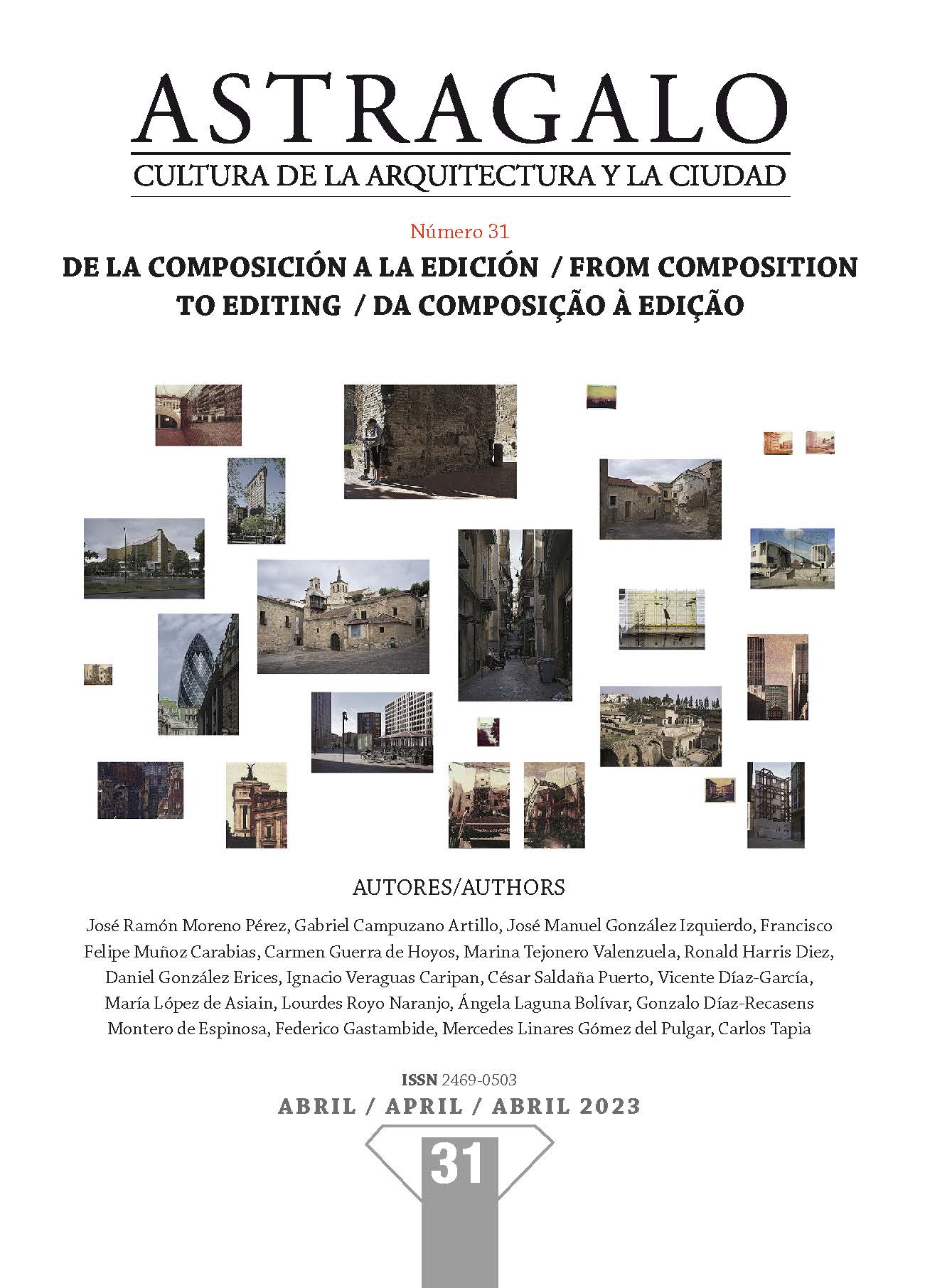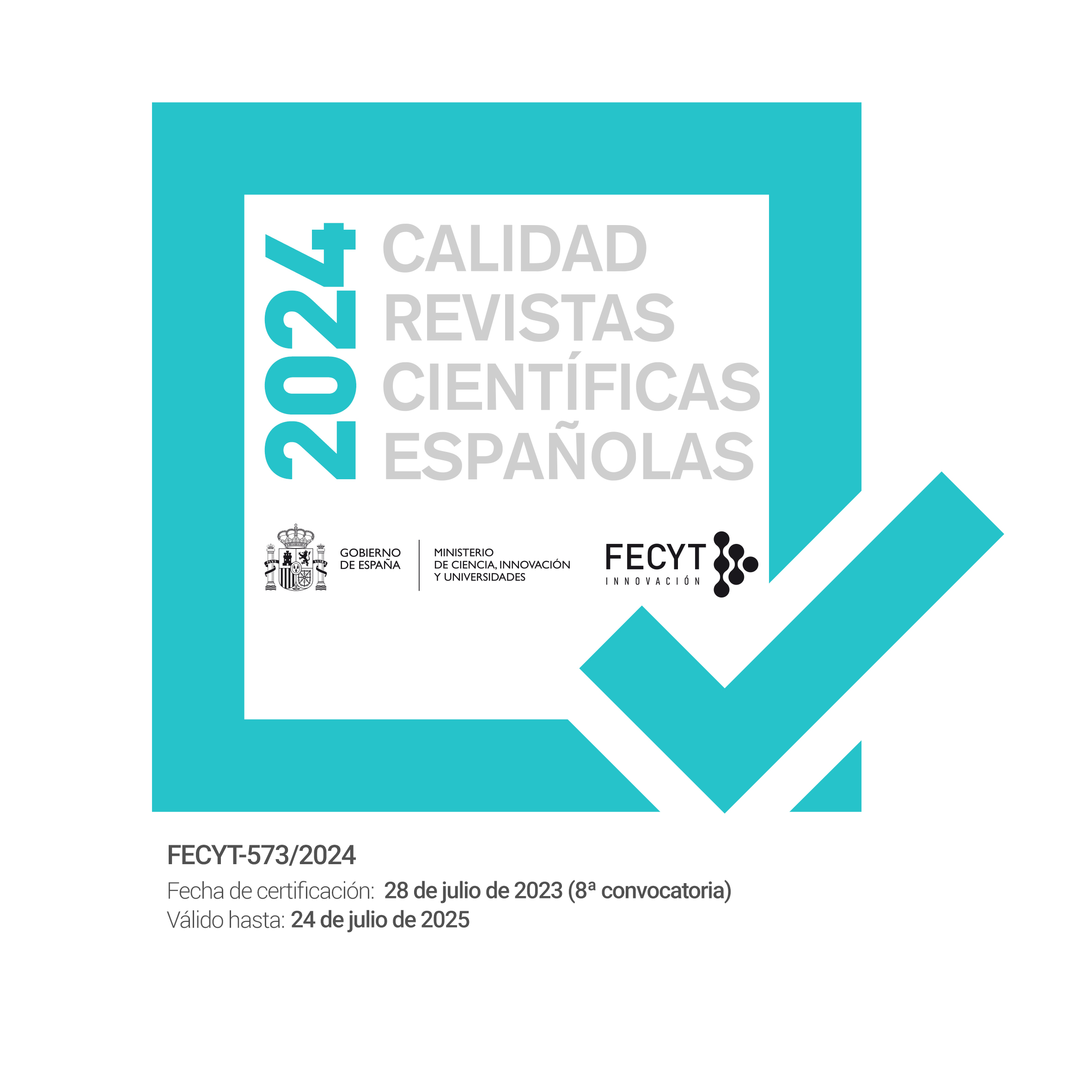El inconsciente que compone: la mano de Copenhague.
DOI:
https://doi.org/10.12795/astragalo.2023.i31.06Palabras clave:
utopía, mano, sueño, entopía.Resumen
En este artículo se pretende analizar la relación del plan urbanístico de la ciudad de Copenhague, conocido como Finger Plan, con la noción del sueño como clave compositiva, un extrañamiento que, en nuestra hipótesis, es tan generativo como la vía racional. Impone asimismo el germen de un imaginario colectivo que garantiza la pervivencia del plan y, más allá, de una idea de comunidad. La utopía danesa-basada en la búsqueda de conexión con la naturaleza y la puesta en práctica del Hygge-se verá representada a través de la simbología de la mano. Esta forma de mano utilizada, o más bien impuesta en la proyección del plan, supone la vinculación directa de la estructura urbana de la ciudad con el sueño colectivo danés.
La aplicación de este símbolo se entiende como una continuación en la historia artística, del uso de esta parte anatómica para la expresión del inconsciente. Por ello, se tratarán las posibles connotaciones de la mano en Copenhague, a través del análisis de obras artísticas realizadas a lo largo de la historia: desde el hombre prehistórico, pasando por el arte clásico hasta el movimiento surrealista.
El Finger Plan supondrá el comienzo del desarrollo onírico de la capital danesa, argumento hoy muy repetido, pero no solo publicitario, como se pretende demostrar. La imagen mental de la “mano” será crucial para su funcionamiento por aceptación social y para entender procesos proyectuales impostados por cláusulas modernas funcionales y compositivas.
Descargas
Citas
Awad Núñez, Samir.2022. “Ørestad (Copenhague, Dinamarca) la introducción de ideales progresistas para la reproducción de las lógicas neoliberales en el urbanismo”. Consultado 15/10/2022.
Blumenfeld, Hans. 1964. “A hundred-year plan—the example of Copenhagen”. Athens Center of Ekistics vol. 17, No.99: 75-81. Consultado 16/10/2022.
Bretón, André. 1922. Manifiestos del surrealismo. Buenos Aires: Editorial argonauta. Consultado 17/01/2023.
By&Havn. The story of Ørestad. Copenhague Growing. Consultado 13/10/2022.
Calvo Serraller, Francisco. 1987.” Doctor Le Corbusier y míster Jeanneret”. Arquitectura Viva 9: 44-49. Consultado 8/01/2023.
Caneva, Caterina. 1994. Los oficios: guía de colecciones y catálogo completo de las pinturas.Italia:Becocci/Scala. Consultado28/12/2022.
Cerrada Macías, Mónica. 2007. La mano a través del arte simbología y gesto de un lenguaje no verbal. Tesis doctoral. Madrid. Consultado 28/12/2022.
Cerón Silva, Jaime. 2010.“Man Ray: La realidad moldeada por la fantasía”. Consultado 09/01/2023.
https://ceronresumido.com/Man-Ray-La-realidad-moldeada-por-la-fantasia.
Christensen, Inger. 2018. “The Dream of a City”. Poetry Foundation 5: 521-532. Consultado 06/10/2022.
Clasper, James. “Ørestad: Where Copenhagen's urban jungle meets its savannah”. VisitCopenhagen. Consultado 22/10/2022.
Costi, Eleonora. “How Copenhagen became an architecture and design paragon”. VisitCopenhagen. Consultado 23/10/2022.
Danish ministry of environment. 2015. “The Finger Plan”. Consultado 22/10/2022. https://danishbusinessauthority.dk/sites/default/files/fp-eng_31_13052015.pdf.
De L’ Ecotais Emmanuelle. 2001. Man Ray 1890-1976. Taschen. Consultado 15/01/2023.
Digest Readers.1973. Los grandes pintores y sus obras maestras. Madrid: Reader Digest 63-82; 206-208. Consultado 08/01/2023.
Doxiadis, Constantinos Apolos. 1969. Entre dystopia y utopía. Cuaderno de moneda y crédito. Madrid: Moneda y Crédito. Consultado 9/01/2023.
Doxiadis, Constantinos Apolos. 1960. Guide to the City of the Future. Su Terry. Consultado 09/01/2023.
Fabricious Moller, Jes. 2018. “The parks of Copenhagen 1850-1900”. Garden History vol. 38 no. 1: 112-123. Consultado 10/10/2022.
Freud, Sigmund. 2013. La interpretación de los sueños. Ediciones Akal. 516-592. Consultado 23/11/2022.
Herbert,Bayer. 1938. “Bauhaus exhibition”. Bulletin of the Museum of Modern Art vol 6. New York: MoMA. Consultado 28/12/2022.
Ingels, Bjarke. 2011. TEDxEastSalon - Bjarke Ingels - Hedonistic Sustainability. YouTube. https://www.youtube.com/watch?v=ogXT_CI7KRU. Consultado 14/12/2022.
Jensen, Sven Allan. 1848. Copenhagen Regional Plan. Copenhagen. Consultado 04/01/2022.
Jensen, Sven Allan. 1990. Fingerplanen-tilblivelsen, oplevet fra gulvet 1945-50. Copenhagen. Consultado 10/01/2023.
Kythor, Ellen. 2020. “Stereotypes in and of Scandinavia.” In Introduction to Nordic Cultures, edited by Annika Lindskog and Jakob Stougaard-Nielsen, 210-214. UCL Press. Consultado27/11/2022.
María, José. 2017. El sueño de Ariadna en la galería Uffizi. Diario del Aire. Consultado 25/01/2023. https://www.diariodelaire.com/2017/03/el-sueno-de-ariadna-en-la-galeria-uffizi.html.
Martínez Pérez, Javier. 2016. El vaciado del natural vida, muerte y aura en la escultura. Tesis doctoral. Universidad complutense de Madrid. Consultado 30/01/2023.
Molina Risueño, Carmen. 2021. El vínculo entre el arte y los sueños desde la práctica pictórica. Sant Carles. 10-18. Consultado13/01/2023.
Muntada Villanueva,Anna. 2012. Bruce Nauman. Barcelona. Consultado 17/01/2023.
Museo Nacional Centro de Arte Reina Sofía.1993. Bruce Nauman.Madrid. Consultado 17/01/2023.
Museu Nacional d’Art de Catalunya de Barcelona. Consultado 07/06/2023. https://www. museunacional.cat
Nouvel, Jean, y Baudrillard. 2002. Los Objetos Singulares: Arquitectura y Filosofía. Buenos Aires: Fondo de Cultura Económica. Consultado 13/11/2022.
Orban Levi, Silvana. 1980. Leonardo da Vinci.Madrid:Editorial Debate. Consultado 22/12/2022.
Papafava, Francesco. 1933. Vaticano. Edizioni Musei Vaticani. Consultado 08/01/2023.
Prieto, Laura, Marco Aurelio, y Don Gummer. 2015. “¿Ariadna o Cleopatra?” La guía de Historia del Arte. Consultado 12/01/2023. https://arte.laguia2000.com/escultura/ariadna-o-cleopatra.
Rasmussen, Steen Eiler. 2004. La experiencia de la arquitectura.Barcelona:Editorial Reverté. Consultado 09/01/2023.
Rasmussen, Steen Eiler. 2014. Ciudades y Edificios. Barcelona: Editorial Reverté. Consultado10/01/2023.
Ricoeur, Paúl. 1990. “La analogía del sueño” en Freud: una interpretación de la cultura.137-150. París: Proyecto Baktún. Consultado 25/01/2023.
Sajic, Adrijana. 2007.” The Exhibition as a Mean to Protect and Promote the Bauhaus Educational Model” in The Bauhaus 1919-1928 at the Museum of Modern Art, N.Y., 1938; the Bauhaus as an Educational Model in the United States.26-52. New York. Consultado 28/12/2022.
Sarina Roma, Billy Sorrentino. 2017. Abstract:Arquitectura Bjarke Ingels. Netflix. Consultado 14/12/2022.
Schwarz, Arturo.1997.” I paint what cannot be photographed” in Man Ray: The Rigour of Imagination.USA: Rizzoli. Consultado 15/01/2023.
Tamayo. 2019. El método paranoico crítico de Dalí. Consultado 15/01/2023. https://www.ttamayo.com/2019/07/el-metodo-paranoico-critico-de-dali/.
Tiedemann, Rolf.2005. “Teoría del conocimiento, teoría del progreso” En Libro de los Pasajes. 459-490. Ediciones Akal. Consultado 23/01/2023.
Til, Michel. 2013. Man Ray / Paul Eluard - Les Mains libres - 1937 - Le dessin «Les mains libres». Lettres volées. https://lettresvolees.fr/eluard/mains_libres.html. Consultado 12/05/2022.
Trolle, Linnet Jeppe. 2011. Money Can't Buy Me Hygge: Danish Middle-Class Consumption, Egalitarianism, and the Sanctity of Inner Space. The International Journal of Anthropology Vol. 55, No. 2. 21-44. Denmark: Berghahn Books. Consultado 13/01/2023.
Trucco, Matias. 2010. ¿Qué es el despertar? indagaciones sobre los límites del dormir y la vigilia desde Sigmund Freud. Consultado 03/11/2022.
Vejre, Henrik. 2017. A century of planning of green space in metropolitan Copenhagen. Copenhagen. Consultado 14/1/2022.
Wiki Art. “ Enciclopedia de artes visuales”.George Brassaï. Consultado 10/02/2023. https://www.wikiart.org/es/brassai
WSP. “DR Koncerthus”. Consultado12/02/2023 https://www.wsp.com/da-dk/projekter/dr-koncerthuset.
Descargas
Publicado
Cómo citar
Número
Sección
Licencia
Derechos de autor 2023 Marina Tejonero Valenzuela

Esta obra está bajo una licencia internacional Creative Commons Atribución-NoComercial-CompartirIgual 4.0.


















